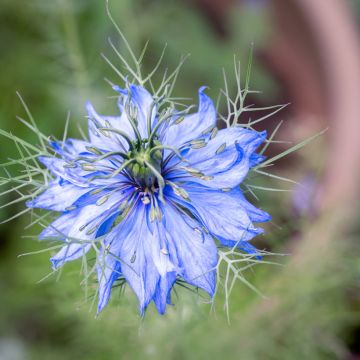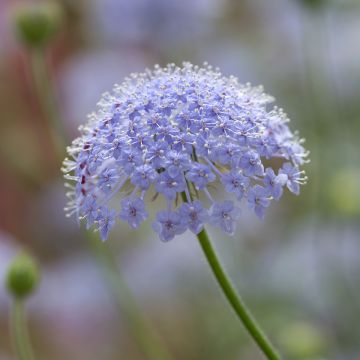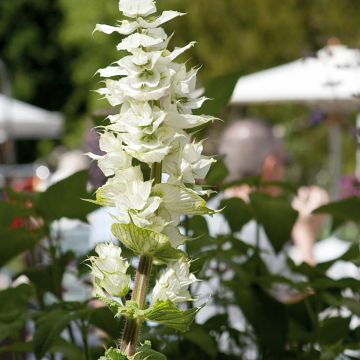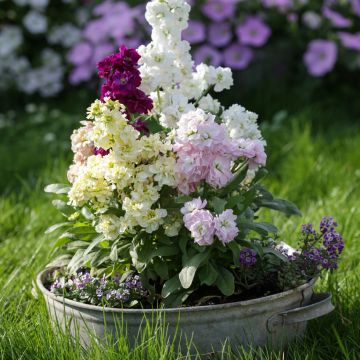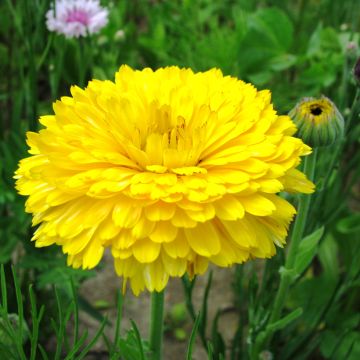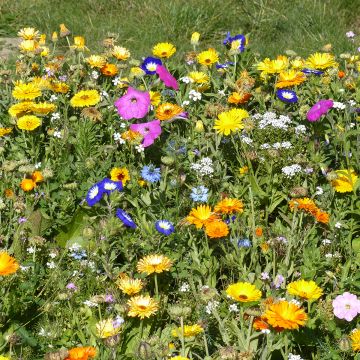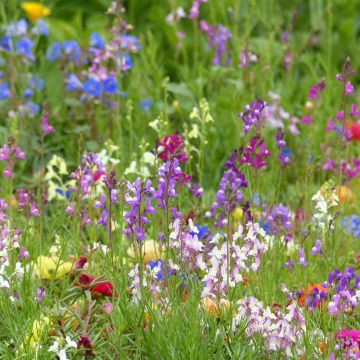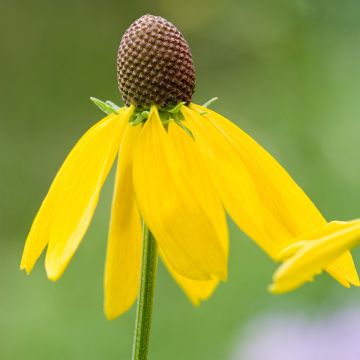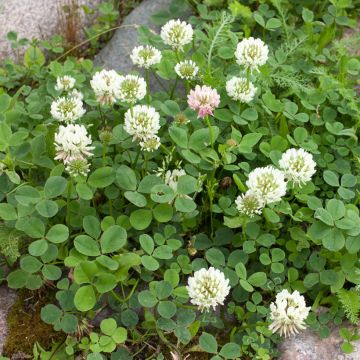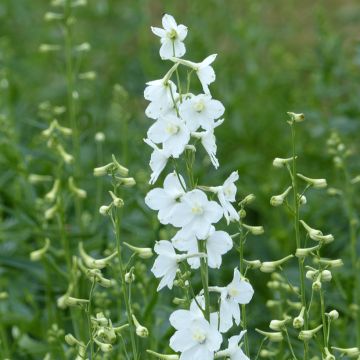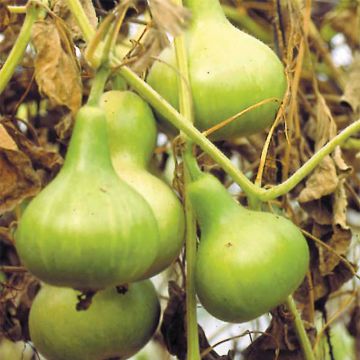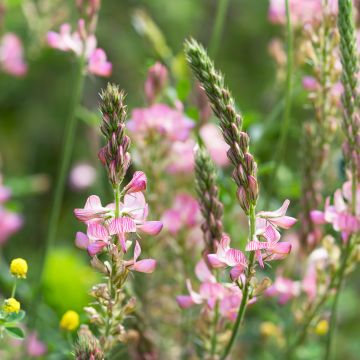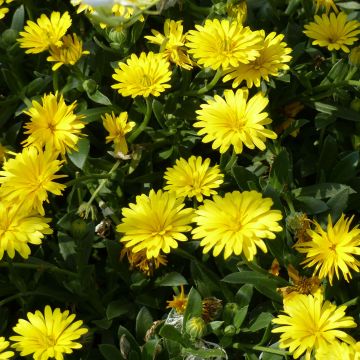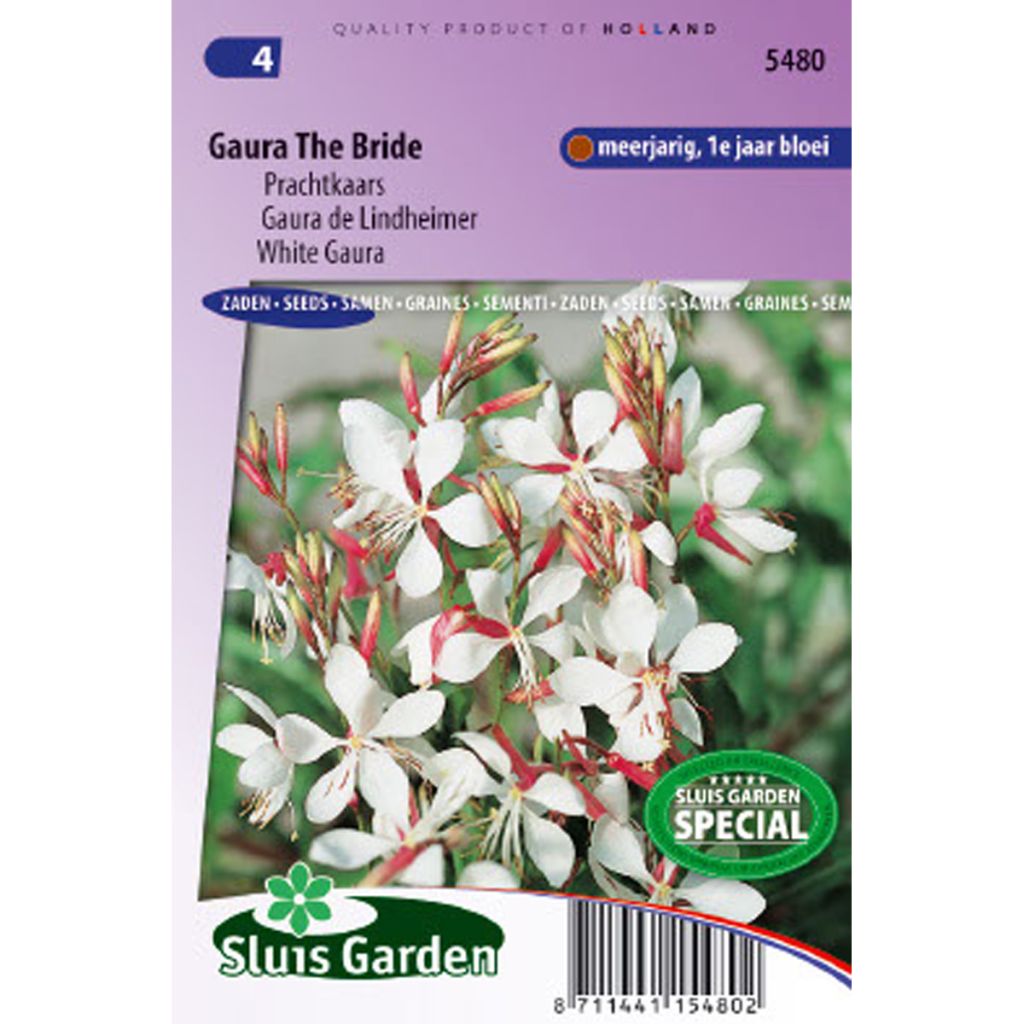

Gaura lindheimeri The Bride Seeds
Gaura lindheimeri The Bride Seeds
Gaura lindheimerii The Bride
Beeblossom
This item cannot be shipped to the selected country
Dispatch by letter from €3.90
More information
Schedule delivery date,
and select date in basket
This plant carries a 6 months recovery warranty
More information
We guarantee the quality of our plants for a full growing cycle, and will replace at our expense any plant that fails to recover under normal climatic and planting conditions.
Seed-only orders are dispatched by sealed envelope. The delivery charge for seed-only orders is €3.90.

Does this plant fit my garden?
Set up your Plantfit profile →
Description
The Gaura lindhermeri 'The Bride' is a graceful and airy plant with many branching stems. From June to September it is covered with a profusion of purple buds bursting into bright white and pale pink flowers, the outside of the petals faintly orange. Its foliage is deciduous and composed of small, velvety, pale green leaves. It grows quickly. Although short-lived, this plant is both elegant and majestic, an essential in any flower garden. Ideal in dry to moist, even poor soil, in the sun. It is easy to sow and blooms quickly.
The Gaura lindheimeri 'The Bride' belongs to the Onagraceae family, it is a cousin of the evening primrose. The natural habitat of Gaura lindheimeri is the border between Mexico and the United States (the prairies and pine forests of Louisiana and Texas, Houston). It is one of the most profusely flowering perennials. 'The Bride' has an airy tufted shape. It is a perennial with a taproot, forming a bushy, slightly flared clump from a rosette, 80 cm (31.5 in) tall, with a spread of 30 to 40 cm (11.8 - 15.7 in). It is the numerous and slender, branched flower stems that give the plant its bushy appearance. Flowering takes place in successive waves, from mid-spring to autumn. The butterfly-like flowers which are white and washed with pink, faintly orange on the outside and slightly more colourful than the original, mingle with the purple buds, grouped in panicles 30 to 80 cm (11.8 - 31.5 in) long. The foliage is deciduous and light green. The small leaves are downy on both sides. It has a taproot system that allows the plant to anchor itself well in poor, even rocky soils.
Gauras have quickly become the stars of urban flower beds and gardens. This success is explained by their incredible abundance of flowers and the speed at which they develop. These plants, which seem impervious to bad weather, quickly become indispensable after only one year. Wherever they are planted, they bring airiness, volume and grace. The elegant and majestic Gaura lindheimeri 'Snowbird' is an absolute essential in a white garden. It is at home at the back of of herbaceous borders or flower beds. It looks good with roses and between shrubs like Abelias and Deutzias, and combines well with other undemanding perennials like daylilies or bearded irises, catmints, Scabiosa 'Moon Dance', Asclepias 'Ice Ballet' and Oenothera versicolor. Gauras also do very well in large pots and window boxes. Their flowers add a very refined touch to bouquets.
The species name comes from the Greek 'gauros', which means majestic, magnificent, in reference to its astonishing flowers that look like butterflies clinging to the stems.
Report an error about the product description
Flowering
Foliage
Plant habit
Botanical data
Gaura
lindheimerii
The Bride
Onagraceae
Beeblossom
Cultivar or hybrid
Other Flower seeds A to Z
Planting and care
Sow the seeds of Gaura 'The Bride' from January to May or in September-October. January to May seems to be the best time for sowing. You can plant the young plants in the ground in the summer. Sow the seeds in a tray or pot filled with multi-purpose compost. Sow the seeds 2mm deep, and cover with a sprinkling of sifted soil or a thin layer of vermiculite. Water lightly. Keep at 18 - 24°C (64.4 - 75.2°F) in a sheltered place. You can also cover the tray or pots with a plastic bag, which you should turn over every 3 days to avoid excessive condensation. Place on a windowsill, away from direct sunlight. Germination should take 15 to 30 days though sometimes it is slower. Remove the cover from the seedlings as soon as germination is successful.
When the plants are large enough to handle, transplant them into a 9cm (3.5 in) pot. Harden them off before planting them outside in May. If you sow late, towards the end of the year, let the plants grow on until they go into winter dormancy. Keep them dry and frost-free in a well-lit and cool place during the winter. Once green shoots appear, water the young plants and keep them frost-free in a well-lit place, ready to transplant them in May.
Gaura lindheimeri 'The Bride' is not fussy about soil type, even poor and dry will do, as long as it is well-drained. The only enemy of this plant, far worse than the cold, is waterlogged soil. Improving the drainage by incorporating materials such as gravel and river sand into the soil will enable it to grow on for several years. A light pruning is essential after each wave of flowering to encourage the growth of new shoots that will, in turn, bloom. This will produce repeated flushes of flowers between June and the beginning of November (do not prune all the clumps in the garden at the same time). Pruning at the start of growth (March-April) will help give the plant a good shape.
Sowing period
Intended location
-
, onOrder confirmed
Reply from on Promesse de fleurs
Flower seeds
Haven't found what you were looking for?
Hardiness is the lowest winter temperature a plant can endure without suffering serious damage or even dying. However, hardiness is affected by location (a sheltered area, such as a patio), protection (winter cover) and soil type (hardiness is improved by well-drained soil).

Photo Sharing Terms & Conditions
In order to encourage gardeners to interact and share their experiences, Promesse de fleurs offers various media enabling content to be uploaded onto its Site - in particular via the ‘Photo sharing’ module.
The User agrees to refrain from:
- Posting any content that is illegal, prejudicial, insulting, racist, inciteful to hatred, revisionist, contrary to public decency, that infringes on privacy or on the privacy rights of third parties, in particular the publicity rights of persons and goods, intellectual property rights, or the right to privacy.
- Submitting content on behalf of a third party;
- Impersonate the identity of a third party and/or publish any personal information about a third party;
In general, the User undertakes to refrain from any unethical behaviour.
All Content (in particular text, comments, files, images, photos, videos, creative works, etc.), which may be subject to property or intellectual property rights, image or other private rights, shall remain the property of the User, subject to the limited rights granted by the terms of the licence granted by Promesse de fleurs as stated below. Users are at liberty to publish or not to publish such Content on the Site, notably via the ‘Photo Sharing’ facility, and accept that this Content shall be made public and freely accessible, notably on the Internet.
Users further acknowledge, undertake to have ,and guarantee that they hold all necessary rights and permissions to publish such material on the Site, in particular with regard to the legislation in force pertaining to any privacy, property, intellectual property, image, or contractual rights, or rights of any other nature. By publishing such Content on the Site, Users acknowledge accepting full liability as publishers of the Content within the meaning of the law, and grant Promesse de fleurs, free of charge, an inclusive, worldwide licence for the said Content for the entire duration of its publication, including all reproduction, representation, up/downloading, displaying, performing, transmission, and storage rights.
Users also grant permission for their name to be linked to the Content and accept that this link may not always be made available.
By engaging in posting material, Users consent to their Content becoming automatically accessible on the Internet, in particular on other sites and/or blogs and/or web pages of the Promesse de fleurs site, including in particular social pages and the Promesse de fleurs catalogue.
Users may secure the removal of entrusted content free of charge by issuing a simple request via our contact form.
The flowering period indicated on our website applies to countries and regions located in USDA zone 8 (France, the United Kingdom, Ireland, the Netherlands, etc.)
It will vary according to where you live:
- In zones 9 to 10 (Italy, Spain, Greece, etc.), flowering will occur about 2 to 4 weeks earlier.
- In zones 6 to 7 (Germany, Poland, Slovenia, and lower mountainous regions), flowering will be delayed by 2 to 3 weeks.
- In zone 5 (Central Europe, Scandinavia), blooming will be delayed by 3 to 5 weeks.
In temperate climates, pruning of spring-flowering shrubs (forsythia, spireas, etc.) should be done just after flowering.
Pruning of summer-flowering shrubs (Indian Lilac, Perovskia, etc.) can be done in winter or spring.
In cold regions as well as with frost-sensitive plants, avoid pruning too early when severe frosts may still occur.
The planting period indicated on our website applies to countries and regions located in USDA zone 8 (France, United Kingdom, Ireland, Netherlands).
It will vary according to where you live:
- In Mediterranean zones (Marseille, Madrid, Milan, etc.), autumn and winter are the best planting periods.
- In continental zones (Strasbourg, Munich, Vienna, etc.), delay planting by 2 to 3 weeks in spring and bring it forward by 2 to 4 weeks in autumn.
- In mountainous regions (the Alps, Pyrenees, Carpathians, etc.), it is best to plant in late spring (May-June) or late summer (August-September).
The harvesting period indicated on our website applies to countries and regions in USDA zone 8 (France, England, Ireland, the Netherlands).
In colder areas (Scandinavia, Poland, Austria...) fruit and vegetable harvests are likely to be delayed by 3-4 weeks.
In warmer areas (Italy, Spain, Greece, etc.), harvesting will probably take place earlier, depending on weather conditions.
The sowing periods indicated on our website apply to countries and regions within USDA Zone 8 (France, UK, Ireland, Netherlands).
In colder areas (Scandinavia, Poland, Austria...), delay any outdoor sowing by 3-4 weeks, or sow under glass.
In warmer climes (Italy, Spain, Greece, etc.), bring outdoor sowing forward by a few weeks.

































